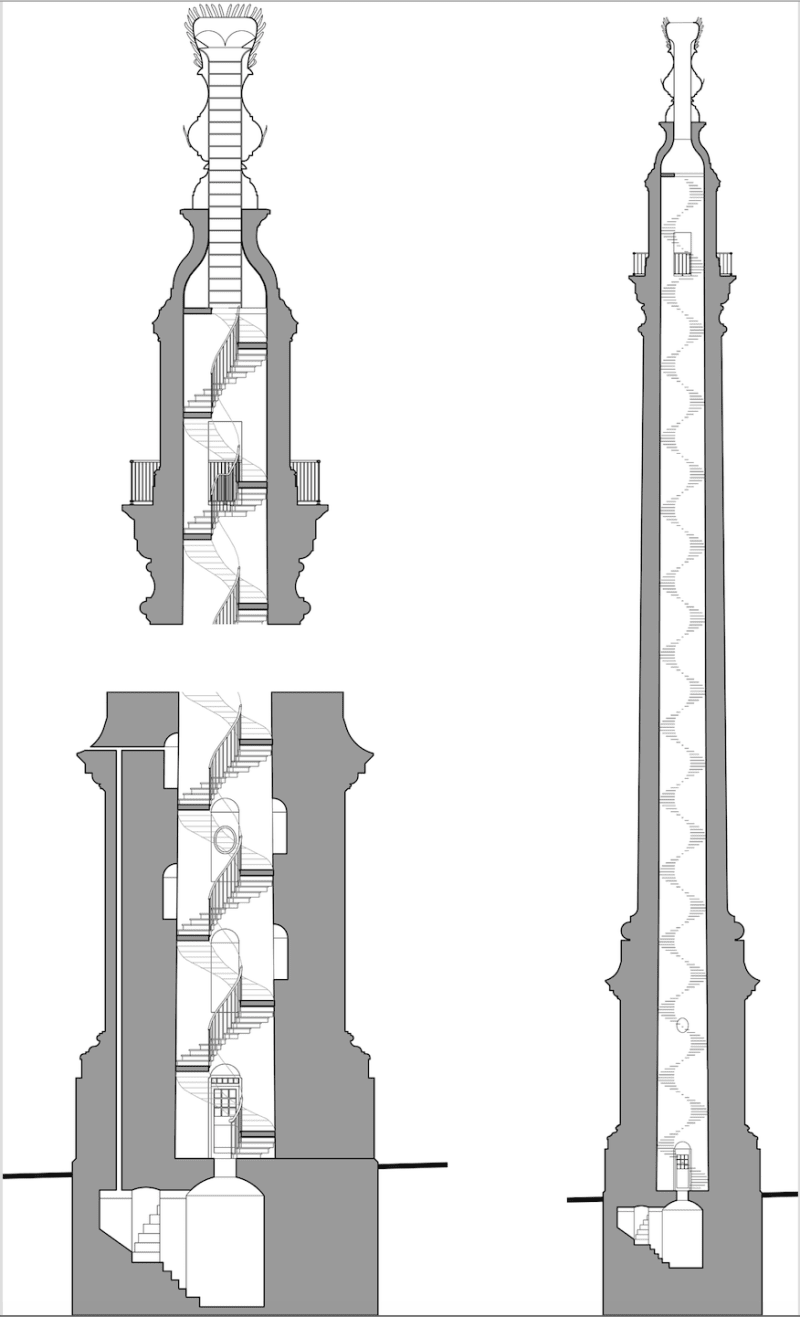Sigmund Freud and the Monument: by Ro Spankie

A guest article from Ro Spankie, University of Westminster
“In sixteen hundred and sixty-six, London burnt like rotten sticks…”
In 1909 Sigmund Freud was invited to visit America and lecture on psychoanalysis. This is an extract from the first of his talks.
“Ladies and Gentlemen, if I may be allowed to generalize – which is unavoidable in so condensed an account as this – I should like to formulate what we have learned so far as follows: our hysterical patients suffer from reminiscences. Their symptoms are residues and mnemic symbols of particular (traumatic) experiences. We may perhaps obtain a deeper understanding of this kind of symbolism if we compare them with other mnemic symbols in other fields. The monuments and memorials with which large cities are adorned are also mnemic symbols. If you take a walk through the streets of London, you will find… not far from London Bridge… a towering… column, which is simply known as ‘The Monument’. It was designed as a memorial of the Great Fire, which broke out in that neighbourhood in 1666 and destroyed a large part of the city. These monuments, then, resemble hysterical symptoms in being mnemic symbols.”
Freud then uses the analogy of architectural monuments to explain the effect of such mnemic symbols on some of his patients:
“… what should we think of a Londoner who shed tears before the monument that commemorates the reduction of his beloved Metropolis to ashes although it has long since risen again in far greater brilliance? Yet every single hysteric and neurotic behaves like (these) … unpractical Londoners. Not only do they remember painful experiences of the remote past, but they still cling to them emotionally; they cannot get free of the past and for its sake they neglect what is real and immediate. This fixation of mental life to pathogenic traumas is one of the most significant and practically important characteristics of neurosis.”
The word ‘monument’ stems from the Latin monēre, ‘to remind’, and as Freud says, the colossal Portland stone Doric column, topped by a golden flaming urn, was built to remind Londoners of the traumatic time when their great city was almost destroyed. Guidebooks say that it was designed by Christopher Wren, and constructed between 1671 and 1677. It stands 202 feet high, and is symbolically positioned 202 feet west of the point where the fire started in Pudding Lane. It creates the focal point of a perspective view at the top of Fish Hill. Inside is a spiral staircase of 311 steps, leading to a viewing platform at the top, offering spectacular views of the new city risen from the flames. (Unintentionally it also provided a popular suicide spot, resulting in 1842 in a cage being built around the top.)
But things also get forgotten, or as Freud would say suppressed. Modern historians now agree that the Monument was actually designed by Wren’s long-term friend and collaborator Robert Hooke, and that the structure had a second less visible function. Hooke was a scientist and Curator of Experiments for the Royal Society in London, a role that required him to make practical demonstrations to the members. Many of these experiments included precision instruments for measuring time and distance, and architecture provided Hooke with the opportunity for constructing these at a scale that would otherwise have been impossible.
Thus, what is not immediately apparent from the outside, is that the Monument was a purpose-built location for scientific experiments involving heights. It was also a zenith telescope, pointing straight upwards, and relying on the earth’s rotation to direct it at different points in the sky. As the section drawing shows, the basement contained a domed laboratory, while the flaming urn at the top functioned as a hinged lid that, when opened, allowed an operator standing at the base to observe the heavens up the shaft of the column. This was the reason that Wren had convinced Charles II on Hooke’s behalf that crowning the column with an urn rather than a statue would enable firework displays to be staged on top of the column.
In 1950 the Monument was awarded Grade I listing and declared (with an unintended tautology) a scheduled monument. The protection order was necessary because, unlike Freud’s hysterical and neurotic patients, a great city moves relentlessly forward and tends to forget its past. In addition, despite architecture’s best intentions, meanings are not set in stone. Standing today surrounded by glass skyscrapers and heavy traffic, it not a question of remembering but rather imagining the medieval wooden city that the Monument commemorates, and the horror of its destruction. And now that we have remembered its forgotten history, perhaps the Monument should in fact be seen - as Lisa Jardine suggests - as “a lasting memorial to the liaison between the City and Science – between commerce and knowledge.”
In October 2011, a Live Music Sculpture created especially for the Monument by British composer Samuel Bordoli was performed 18 times during one weekend. This was the first occasion that music had ever been heard inside the structure, and effectively transformed it into a gigantic reverberating musical instrument.
Thanks to John Hare for permission to use his drawing of the Monument, which was reproduced in *The Curious Life of Robert Hooke: The Man who Measured London *by Lisa Jardine (HarperCollins Publishers, 2003) p.172